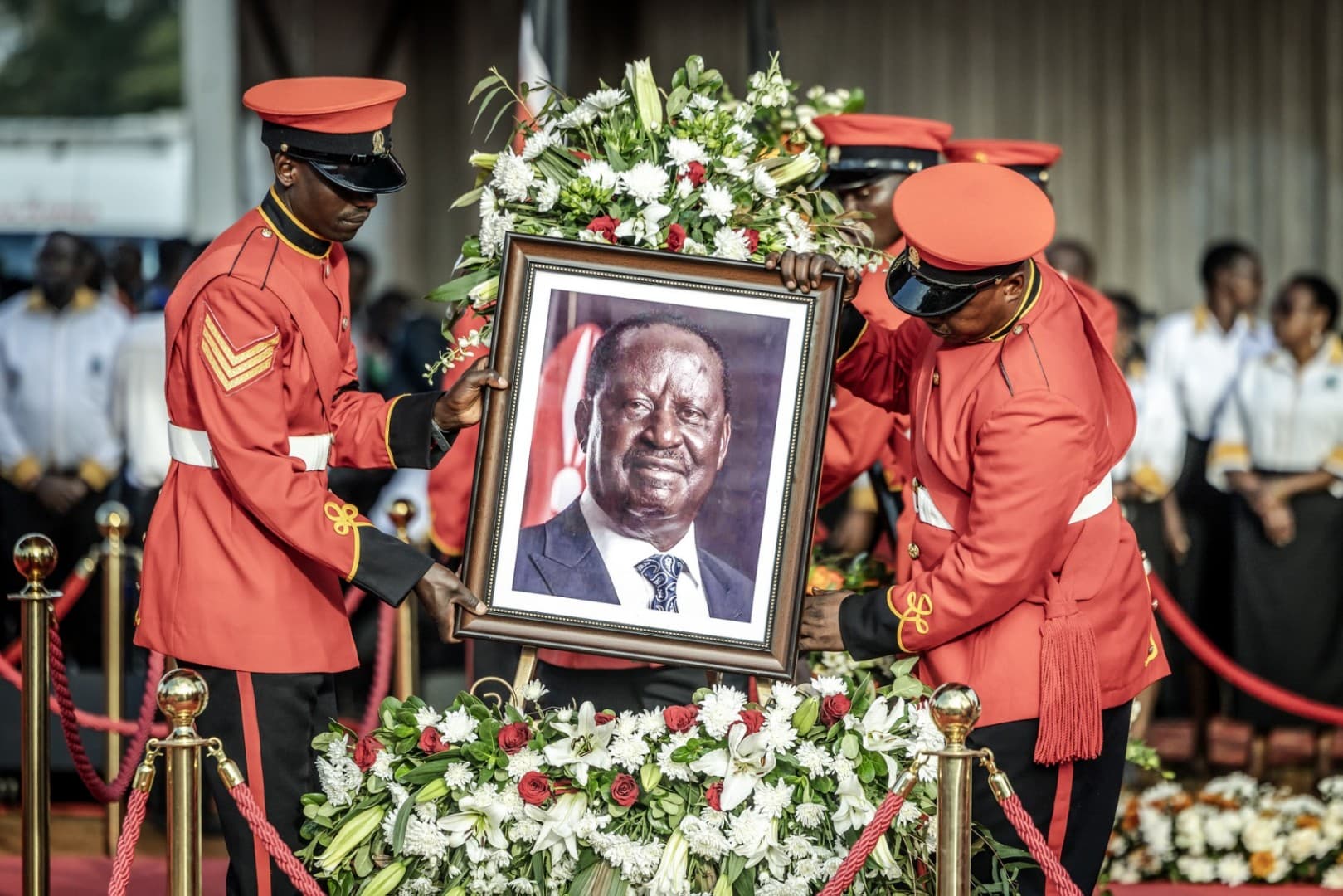We're loading the full news article for you. This includes the article content, images, author information, and related articles.
A sophisticated disinformation campaign circulating fabricated reports, images, and videos concerning the death of former Prime Minister Raila Odinga has been identified, highlighting a grave threat to Kenya's public order and information integrity.

Reports circulating on Friday, October 24, 2025, alleging the death, public viewing, and subsequent funeral of Azimio la Umoja–One Kenya Coalition Party leader Raila Odinga are unequivocally false. Mr. Odinga is alive, and official channels have refuted these claims. An investigation by Streamline News reveals that the narratives, including detailed accounts of events at Kasarani Stadium and interactions involving Interior Cabinet Secretary Kipchumba Murkomen, are part of a coordinated disinformation campaign designed to mislead the public.
The fabricated story, which appeared on various social media platforms and spoofed news sites, claimed Mr. Odinga had passed away in India on October 15, 2025. It was followed by elaborate, fictional accounts of his body viewing in Nairobi, which supposedly descended into chaos, prompting a police response with tear gas and live ammunition. The disinformation even included a fabricated anecdote about CS Murkomen being chided for his attire at the non-existent event. However, there are no credible records of any such events occurring. Fact-checking organizations have actively debunked related false content, such as videos purported to be Mr. Odinga's final message, which were found to be old clips taken out of context. In reality, CS Murkomen's public activity on Friday, October 24, 2025, involved a gala dinner for the State Department for Correctional Services, where he spoke on reforms.
This incident underscores the growing danger of political disinformation in Kenya, a tactic that has become increasingly prevalent during election cycles and periods of high political tension. Research indicates that a significant percentage of Kenyan news consumers find it difficult to distinguish between real and fake news online, creating a fertile ground for the spread of malicious falsehoods. These campaigns often use social media to rapidly disseminate fabricated content, including fake polls, manipulated videos, and AI-generated images, to shape public opinion and sow discord.
The Kenyan government has established legal frameworks to combat this menace. The Computer Misuse and Cybercrimes Act of 2018 criminalizes the intentional publication of false or misleading information that is calculated to cause panic, chaos, or violence. Those found guilty of such offenses face severe penalties, including fines of up to KES 5 million, imprisonment for up to ten years, or both. The law specifically targets disinformation intended to discredit a person's reputation or incite hatred.
The deliberate spread of false information regarding a high-profile national figure like Mr. Odinga is not merely a political prank; it is a threat to national stability. Such rumors can incite public anxiety, trigger violence, and erode public trust in both the media and state institutions. The sophistication of this campaign, which included generating numerous false articles that were then indexed by search engines, represents a significant escalation in tactics. This pollution of the information ecosystem makes it increasingly difficult for citizens to access factual information, thereby undermining their ability to make informed decisions. Authorities have previously warned that the spread of unfounded rumors about prominent figures can lead to confusion and public disorder, emphasizing the importance of relying on official communication channels.
Streamline News urges the public to exercise extreme caution and to verify information from multiple, credible, and established media outlets before sharing. Citizens are encouraged to report suspected fake news to relevant authorities and platforms to help curb its spread.
Keep the conversation in one place—threads here stay linked to the story and in the forums.
Other hot threads
E-sports and Gaming Community in Kenya
Active 6 months ago
Popular Recreational Activities Across Counties
Active 6 months ago
The Role of Technology in Modern Agriculture (AgriTech)
Active 6 months ago
Investing in Youth Sports Development Programs
Active 6 months ago